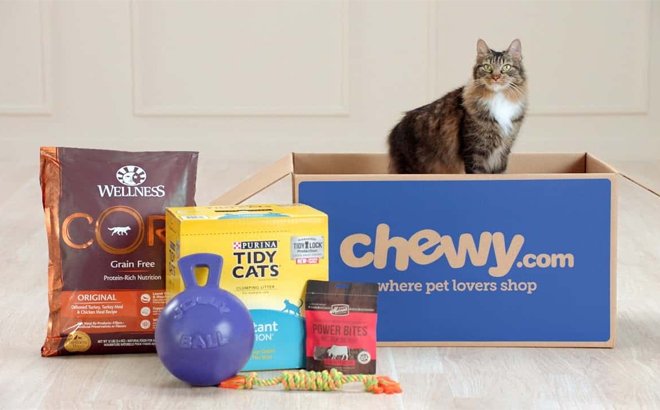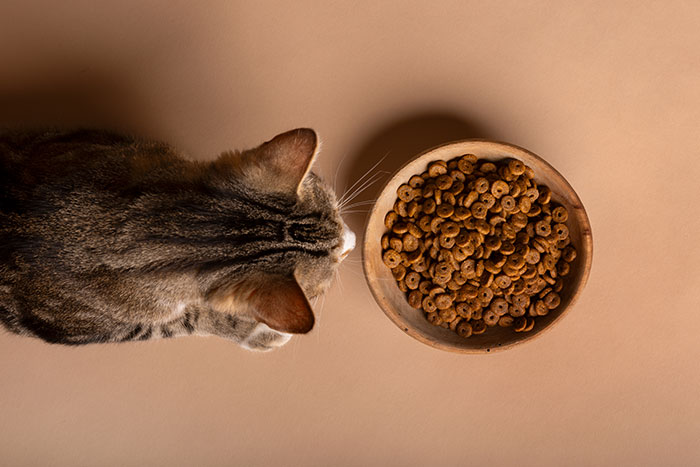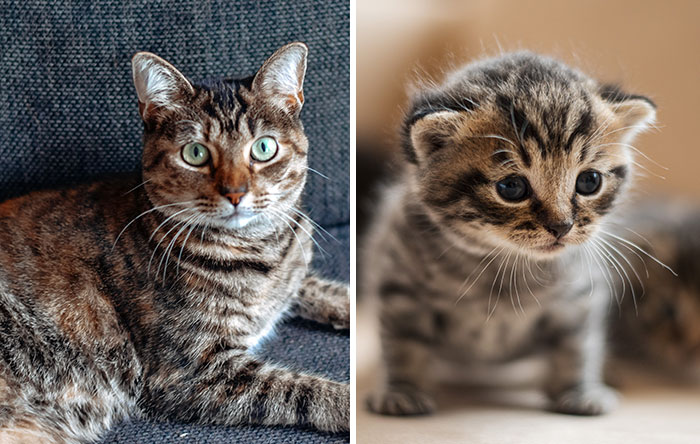
When to Switch from Kitten Food to Adult Cat Food: A Vet Guide
It is not always clear when you should be switching your little bundle of fluff from their kitten food, and many owners are unsure how to go about it.
The switch from kitten food to cat food does not have to be daunting; you need to ensure your furry friend is on the right food to support their growth and development and the life stage they’re in.
- Switch to adult cat food at 10-12 months, or later for larger breeds like Maine Coons.
- Transition to adult food over 5 days, starting with 10-20% new food.
- Adult cat food fed continuously can cause nutrient deficiencies in kittens.
- Kitten to adult cat food switch should be gradual to prevent stomach issues.
- Dry food preferred for cats with dental issues, wet food for fussy eaters.
The best time to transition is when your cat is the appropriate age and has just about reached their adult weight. We usually suggest changing foods when you’re planning a quiet few days at home and have plenty of time to monitor your pet.
This post may include affiliate links.
The information provided herein is for informational purposes only. Please refer to our disclaimer for more details..
What type of food should I be offering?
You can switch to dry kibble or wet food or offer a mix of both when transitioning your kitten. This is true regardless of what your kitten was eating.
However, if they were on wet kitten food, you may find they prefer soft foods in the future.
Solid food (dry cat food) is my preference for those genetically prone to dental disease and gingivitis, as it can slow down the disease progression. However, eating solid food isn’t advised for those breeds prone to kidney disease or bladder stones.
As long as you offer a complete and balanced kitten food containing all of the required vitamins and minerals, you can be happy your little one is getting what they need for the rapid growth and development they’ll be undergoing during their early adult life.
For how long should a kitten eat kitten food?
Generally, a kitten is weaned onto food at about 3-4 weeks old. This is sometimes mixed with kitten formula, but this is not usually necessary. Kittens are fully weaned at about 8 weeks of age. They will eat the same diet until it’s time to switch to an adult diet at around 10 to 12 months of age.
Larger cat breeds may need to wait a few months longer until they are ready. For the largest breeds (such as the Maine Coon), we may switch to adult cat food at around 18 months.
Cats are typically ready for an adult diet when they have done most of their growing. It’s best not to delay the switch too long, as this can lead to obesity in young cats.
Similarly, you do not want to transition your cat too early, as this can mean they’re not getting the proper nutrients from their diet, as felines have different nutritional needs at each life stage.
How do you transition a kitten to cat food?
Once ready, we should offer a small amount of cat food. A good rule of thumb is to make the change over 5 days or so. On day one, we offer about 10-20% of the new adult food and 80-90% of the regular kitten food. As long as this is well tolerated, we’d increase the amount of adult food the next day, reducing the amount of kitten food.

We should monitor the cat for signs such as an upset stomach or bloating, which may indicate the new diet does not suit them or that they are being transitioned to fresh food too quickly.
What happens if my kitten eats adult cat food?
Kitten food has different ingredients in different ratios to adult food, containing more calories and minerals, including calcium. This supports their rapid growth and bone development.
As a one-off, if your kitten gets hold of your adult cat’s food, nothing much will likely happen. However, if they have a sensitive stomach, they may experience mild diarrhea or vomiting for a day or two.
If you feed a kitten adult food continuously, it could suffer from nutritional deficiencies and poor growth. Remember, kittens and adult cats have different nutrient and calorie requirements.
Should I offer wet or dry food when feeding a young adult?
It is your choice how to feed your cat, and most owners will provide the same type of diet that they were giving to their kitten.
There are pros and cons to each food type. Dry food can be cheaper and easier to serve and store, while wet food tends to be tastier, so it is a good choice for fussy eaters.
As a compromise, many will mix-feed their adult cats. This can include offering wet food once or twice a day while having dry food down at all times. However, if your cat is overweight, it is best not to allow them to free graze.
FAQ
What happens if you switch from kitten to cat food too quickly?
If you transition from kitten to cat food too abruptly, you’re likely to find your cat develops some runny poo and gas. This is why owners are advised to make the change slowly over several days.
What if I want to transition from kitten food given by the breeder to another kitten food?
In my experience, this is something many new owners will want to do, particularly if they feel the pet food provided is not high-quality. I also find that many breeders will offer raw diets, which many owners are not keen on continuing.
When changing from one kitten food to another, we can follow the same rules as when we change from a kitten to adult food, i.e., doing so gradually over several days and monitoring our cat for any signs of stomach upset.
What if my cat is unwell after their food is changed?
Don’t hesitate to contact your veterinarian if your cat is unwell, i.e., off their food, lethargic, losing weight, or vomiting persistently.
However, most signs will be mild and transient and can be managed from home. This may mean offering a bland diet of chicken and rice, providing plenty of water, and starting a course of probiotics.
801views
Share on Facebook Image credits:
Image credits:  Image credits:
Image credits: 


10
0